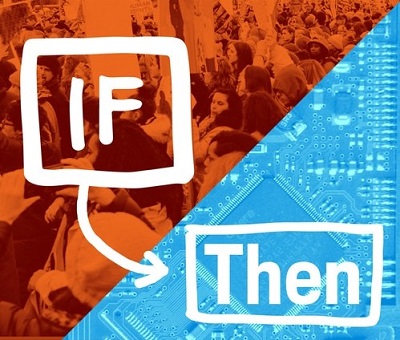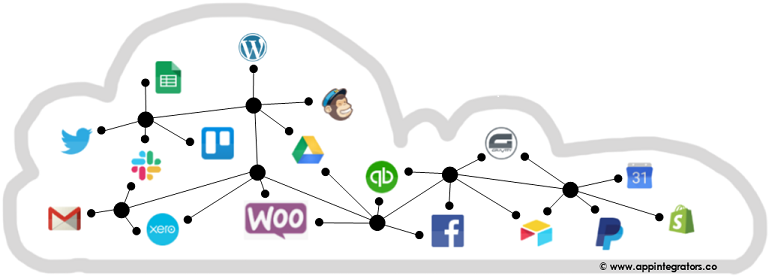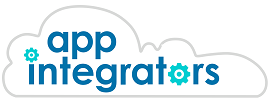In order to untangle the relationship between the two, it is worth looking at it from a historical perspective.
Automation

“If this happens…
Then do that”
…is the programmer’s fundamental building block.
Using this logic, the programmer writes a set of instructions for the machine to automatically perform certain tasks based on different events – automation in a nutshell.
Manual Integration
Even when software applications were designed to be stand-alone desktop programs (as opposed to online) there was sometimes a need to share data between different programs. Your accounting program might, for example, need to load a big batch of invoices from your Excel spreadsheet. To achieve this, you needed to export the invoices in a CSV file using the export function in Excel and then import the CSV into the accounting software program using its import function.
This, essentially, was data integration, but in this case, it was manual integration.
The Cloud
In the past decade, there has been a migration of desktop software applications to web applications, which you run in your own web browser. With this set-up, your data no longer resides on your hard drive but on remote servers (the cloud).
There’s an App for that
“Software”, as a famous quote goes, “has been eating the world”. As computer programming slowly takes over all of our business processes, software apps have become more and more specialised. No matter how small your business niche is today, you will find that “there is an app for that”.
The result of this is that most small businesses have their data spread across several different apps in the cloud. Customer data might be contained in your cloud accounting software, your customer database and your email programs. The immediate problem posed by this scattered data is keeping it all in synch. If Customer A, for example, changes their email address, somebody has to manually log into all three web apps and update the data – a boring and error-prone process that often only gets done hours or days after the initial change.
It needn’t be this way. All of your data in the cloud is on the internet, and everything on the internet, by definition, can be connected to everything else.
Integration

Automated Integration
Integrating all of your web app data so that it stays in sync is itself a type of automation. The same if, then logic is followed: If Customer A’s details are updated in the online customer database, then automatically update their details in the accounting and email apps. How much easier is this than exporting from one app, and importing into the other!
Advanced Automation

Automatically syncing your data is just the first step. Once your data is integrated, instead of just using the Trigger “email address has changed“, many other triggers can be used. Examples:
“payment has been received”
“new subscriber to mailing list”
“new comment on blog”
Likewise, instead of just using the Action “update email address”, other actions such as the following can be triggered:
“Send email”
“Add to mailing list”
“Create invoice”
“Add tag”
“Diarise for follow- up”
“Send message to team-mate”
“Tweet”
Conditional logic can be used too:
If the trigger data is type A,
Then send email A,
If it is Type B,
Then send email B.
Delays can also be used:
After 1st email is sent,
Wait 5 days and then send 2nd email
The surprising thing that you discover once you have done a lot of automation is that it is not so much “which business processes can be automated” as “which business processes can’t be automated”. Please contact us if you would like to find out which of your own business processes are well suited for automation.

Recent Comments